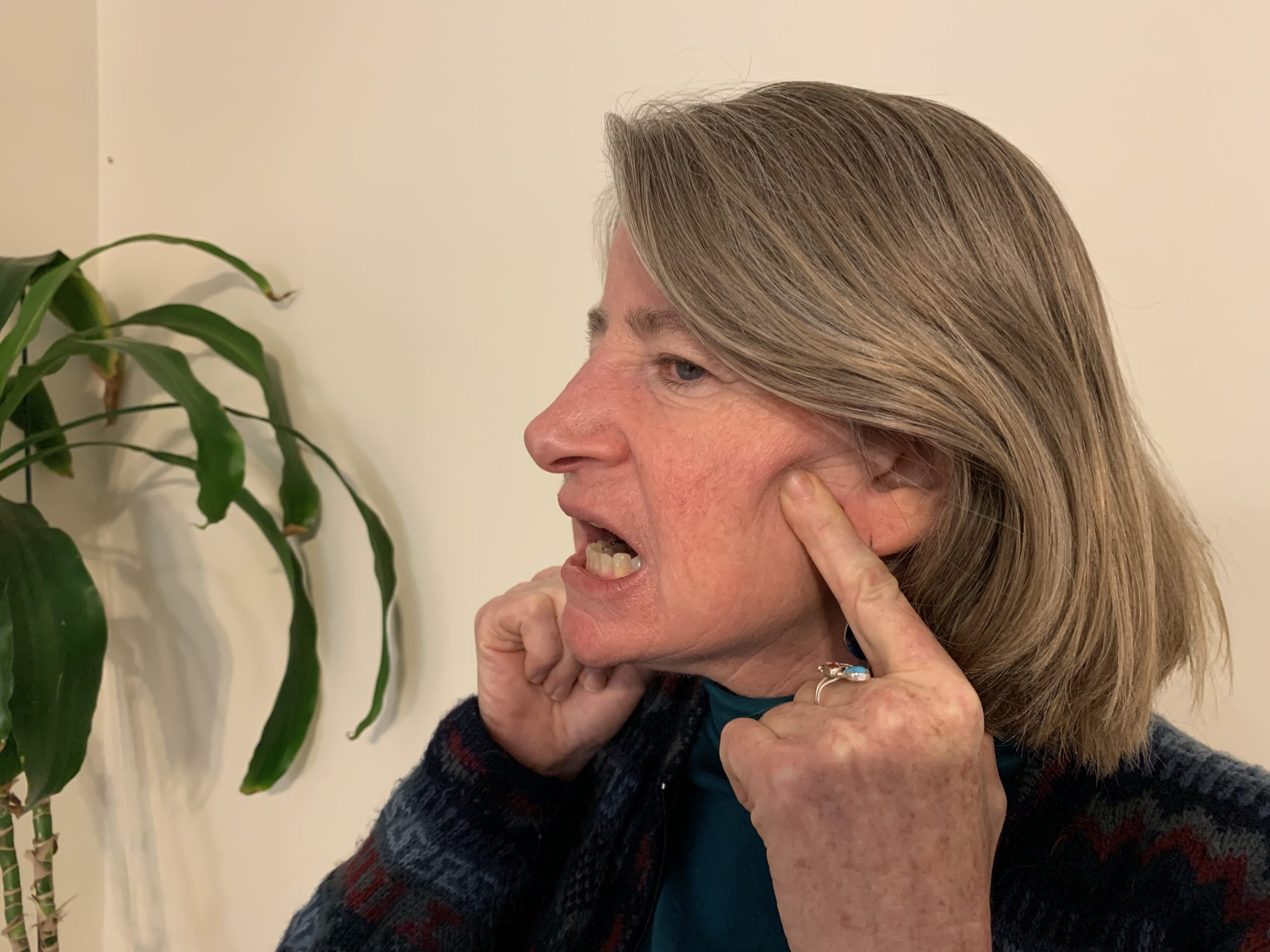Your fear may have an important message for you. Acknowledging it doesn’t mean you let it stop you from doing things you want to do.
In my psychotherapy practice, I recently received a call from a potential client stating she wanted help “getting rid of anxiety.” Anxiety, which I think of as fear in motion, manifests in ways that cause discomfort — a fast heart rate, sweaty palms, tense muscles, worry or racing thoughts, and difficulty sleeping. I can appreciate wanting to get rid of these symptoms. However, in my experience, acknowledging fear, which underlies anxiety, and exploring it, provides a more effective and long-lasting solution.
Rather than admitting to being afraid, people often identify being anxious which, while still not pleasant, as being more acceptable, or at least not as overwhelming, as simply being afraid. Men especially, generally view fear as being unattractive, not manly, a sign of weakness, or even shameful. Sometimes other emotional states, such as fits of anger or even depression, hide underlying fear. Addictions can be a cover for fear as well.
Fear is a natural, physiological response to danger — real or perceived (to our bodies there is no difference). It alerts us to pay attention. Our heart races, breathing quickens, and muscles become tense to confront the threat. Sometimes adrenaline is released providing excess energy. The threat may be out of conscious awareness, but the symptoms call our attention. Fear can be a natural response to doing something new and to a situation filled with uncertainty.
As I thought about writing this article, for example, I woke up early one morning, aware of a big knot in my gut. If you’ve ever had one of these you know it’s not comfortable. Fortunately for me, I remembered to follow the advice I was preparing to write about! I exaggerated the gnarly knot. I acknowledged to myself: “I’m afraid.” I explored the cause of my fear — being vulnerable, open to judgment, and/or criticism. I remembered my childhood experience where getting attention was not always positive. I focused on my reason for writing this — my desire to share the tools I’ve learned to help people feel more alive. And I tolerated the discomfort in my gut, breathing into it, with the hand on the knotted area, without trying to make it go away. Slowly, the knot released.
Understanding Fear & Anxiety
Sometimes fear leads to immobilization, as in the phrases: “stopped in my tracks” or “frozen in fear.” Fear is generally at the root of anxiety, but anxiety also includes feeling jittery, worrying about things in the past or the future, and discomfort from excess physical energy. A search about fear in Google or on Medium provides links to many excellent articles about overcoming the immobilization caused by fear to do things out of one’s comfort zone.
Approaches to anxiety, and the fear which underlies it, generally focus on symptom reduction. Techniques from mindfulness, meditation, and breathing exercises offer guidance on shifting one’s thoughts, learning to control breathing patterns, and relaxation techniques. Medications are often prescribed as a way to calm anxious nerves.
The pandemic has caused increased fear and a spike in anxiety in most people. Most of us have not previously encountered the danger of a potentially life-threatening virus, transmitted from one person to another, often without awareness. We have come to fear normal interactions — being close and greeting one another with a handshake or a hug. What used to be benign gatherings with relatives or friends became potentially dangerous, let alone gatherings with larger groups. Physical symptoms of anxiety alert us to be cautious in getting close.
Other situations, such as public speaking, a performance, social gatherings (aside from the concerns due to the pandemic), or going on a blind date cause an increase in anxiety for different reasons. We fear the possibility of psychological danger from embarrassment or humiliation from failing publicly. In these situations, when the event ends, our anxiety symptoms stop as well. Chronic anxiety or persistent fear presents a bigger problem.
The Bioenergetic Approach to Addressing Fear & Anxiety
As a bioenergetic therapist, integrating active work with the body along with the mind, my approach begins with helping clients begin to identify and explore their discomfort. I invite them to notice their bodily sensations in the safe space of my office and to describe them in as much detail as possible. For some clients, this is easy while others need coaching in bringing awareness to their bodies. I suggest they note areas that call their attention, areas where they feel tense or relaxed, and notice their breathing pattern.
Next, I often suggest something really crazy. Though it’s counterintuitive, I explain, as I understand they want the discomfort to stop, I encourage them to exaggerate the symptoms. I may ask, for example, what would it look like if you allowed your whole body to express this feeling? After initially looking confused, they usually comply. They may breathe more quickly, they might stand and shake in a wild manner, or they may make a knot tighter. I suggest they also speak about their worry and/or racing thoughts, which generally accompany the symptoms. As they do this, I invite them to explore the underlying message of their body.
They begin to own their fear, with a simple statement such as: “I’m afraid of being rejected” or “I fear being out of control.” Other fears include being alone, being overwhelmed, being hurt by someone who has power over them or failing. Sometimes people express feeling afraid of their anxiety (like being afraid of being afraid)!
For many of my clients, acknowledging and naming their fear provides a good beginning towards feeling calmer. It interrupts their belief that it’s not acceptable to be afraid or to admit feeling fear. It breaks through to the truth of what they feel. Rather than using the exhausting effort of denial, in time, they can relax, in facing what is.
Some situations require not acknowledging fear at the moment. If you are in the midst of danger your resources (both physical and mental) are used to confront the situation. If you are accosted by an intruder in your home, for example, don’t stop to tell them you are afraid! If you are in imminent danger for any reason, you need to focus on thinking and acting as quickly as possible to protect yourself and those around you.
Fear, Muscle Tension & Traumatic Relational Experiences
Similarly, children experiencing abuse, neglect, or witnessing violence in their homes often are not safe enough to admit being afraid. The fear may live in their body as muscle tension, generally out of awareness, for years, even decades. Healing and recovering include acknowledging the fear. If you experienced this, you may need support to process your fear, along with the other feelings from the painful experiences. Your body needs to release the tension and the excess energy from the adrenaline that was produced to face the threat — both from the past and possibly from situations in the present. You need compassion and comfort to express the pain of what you suffered. You may need repeated experience with acknowledging your fear, along with your underlying feelings, and having your boundaries respected, to begin to release the tension associated with your fear and to feel calmer and safer.
The alternative to recovering from situations where you were afraid, which includes admitting your fear and working through your feelings, involves chronically tense muscles. You may have hidden your fear, along with suppressing other emotions, such as anger, sadness, or disgust, through tensing your muscles and holding your breath. A child trying not to cry, for instance, tenses and holds their breath to stop the emotion from moving through.
While holding back emotions is important in the midst of danger, chronically tense muscles stress your body. This leads to being depleted as your body’s energy is used in holding tension. The tension is likely out of your awareness as you have become accustomed to it, but this affects you all the time. You may have stopped identifying the source of your fear or even that you are afraid. Chronic tension contributes to decreased vitality and overall health. Stress from chronically suppressing emotions contributes to, or at least exacerbates, many mental and physical illnesses including heart disease, depression, hypertension, headaches, etc. Like an emotional mute button that’s always on, it leads to a decreased ability to experience pleasure or to enjoy your life. It may cause conflicts in your relationships, especially if you lash out at those you love, rather than softening to address and share your feelings and needs.
If you deny your fear out of needing to appear “cool” or you have not had the permission or felt safe enough (especially in situations of childhood abuse) to admit you were afraid, I give you this permission. No one has the right to tell you not to be afraid. You can benefit from the help of a professional to work through these limitations. You may fear the depth of sorrow, grief, or anger beneath the fear. You may fear your ability to hurt yourself or someone else if you unleash the rage and pain you feel. You may need support to learn to tolerate these feelings and to express them in positive, non-destructive ways.
Abuse and neglect, in my experience, are generally perpetrated by people riddled with fear of pain and wounding from their own past. Unable to face their own pain, out of fear combined with shame, they abuse others who are vulnerable and dependent on them. Healing the cycle of shame and abuse is not easy and takes time. Admitting your fear is a beginning, along with working through the wounding you have experienced. This includes telling the story, allowing your emotions, and, perhaps the next most difficult part — asking for help.
Even some popular leaders in the spiritual and psychology worlds fear emotions such as anger. Rather than admitting their fear, however, they state that anger is bad and that in order to be spiritually advanced you need to “rise above it.” Other leaders deny the value of working with anger in grounded and safe ways and criticize modalities that offer this.
Client Examples
The extremely abusive father of one of my clients could not tolerate her emotions, especially her tears. She learned not to cry at all costs. I have come to believe that her father was terrified of his own emotional pain and could not tolerate seeing pain mirrored in her. Even after years of therapy and frequent reminders from me that her tears are welcome, my client uses tremendous effort not to cry. In response to something that has naturally upset her, I observe her hold her breath, deny that anything’s wrong, and state “I’m okay, everything’s fine.” She needs frequent reassurance that I’m not angry if she cries or is upset.
Another client experienced heightened anxiety following being in a potentially dangerous situation where his car stalled on the ramp of a major highway. As we explored the feeling of anxiety in his body, I encouraged him to put a hand on his solar plexus which he identified as being tense. As he owned the fear from the situation and brought some comfort to himself with his hand, his anxiety gradually lessened.
In another situation, working with a client, born male, now identifying as gender-neutral using pronouns they/them, we identified their feeling of fear beneath anxiety and depression. My client was at a point of uncertainty and transition regarding work and relationships. They noted a pattern of going to sleep late and playing computer games excessively to avoid the anxiety and underlying fear at bedtime.
In one session, we began with noting body sensations and exaggerating them. When I suggested exploring the underlying message of their experience, my client asked for help as this was not initially clear to them. I talked about how fear often underlies tension. This resonated with them. Spontaneously, their breathing slowed with this awareness.
I next suggested they find a pillow or blanket they like (we were working by telehealth) and hug it. In doing this, I realized it was a slightly risky intervention to suggest for a young person who was raised as a male. But I felt it was what they needed. As they hugged the pillow, they immediately relaxed. Their breathing slowed even more with several deep sighs. They reported feeling calmer. We discussed the initial discomfort they felt in doing this, with the cultural conditioning of males to be strong, not show vulnerability or need. But the benefit to my client was palpable. They later reported that the feeling of calm and relaxation lingered for several days after the session.
Admitting Your Fear
I invite you to explore admitting your fear if you dare. For men, quite possibly, you might discover a new definition of being a man. Most people, including partners who want to view you as strong, sexy, manly, and desirable, will respond favorably to your honesty, tenderness, and vulnerability. If they don’t, consider more open discussions about this and/or explore couple’s counseling. Women may feel some relief from permission to acknowledge feeling afraid. Explore what you fear and consider getting help in understanding it, including your history. Experiment with bringing your attention to the uncomfortable physical sensations that accompany being anxious or afraid. Consider what you might learn from the feelings rather than immediately aiming to make them go away.
Think about what comfort or support you need and where you can get it — from yourself (possibly with the help of something soft like your hand or a pillow) and/or from people or a pet. In time, after the initial resistance, you may experience more relaxation and soften of tension, when you receive comfort and support. If those you love aren’t able to hear your fears and respond to your needs, seek help from those who can, so you can release your fears and live more relaxed. Similarly, if someone tells you they are afraid, start by listening and offering support, rather than trying to fix or change it. Explore what the person needs which might be some type of comfort or just being heard.
Acknowledging fear in yourself or someone else provides a first step to accepting it. Your fear may have an important message for you. Paying attention to it doesn’t mean you let it stop you from doing things you want to do. Rather, it can help you to get the comfort or support you need to become more relaxed. Your relationships, along with your well-being and the well-being of those around you will benefit.














